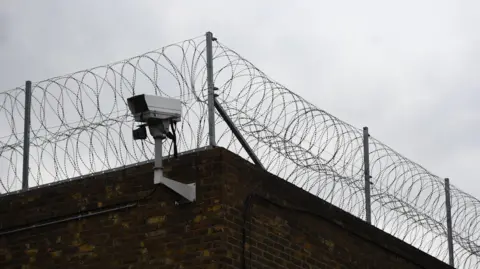The recent annual report from the Chief Inspector of Prisons has raised significant alarms regarding the rampant drug smuggling issues plaguing prisons in England and Wales. According to the report, the overwhelming amount of illicit substances being smuggled into these facilities is severely undermining the stability of the prison system and hampering rehabilitation efforts aimed at reducing recidivism rates. This stark assessment was articulated by Charlie Taylor, the Chief Inspector, who stated that the current state of drug-related activities is leading to “seemingly uncontrolled levels of criminality” within prison walls, posing challenges that staff—often inexperienced and pressured—cannot effectively manage.
Drones have emerged as a key method for delivering these drugs, with criminal gangs utilizing them to transport contraband directly into prisons. This method of smuggling has become particularly alarming due to its effectiveness and the ease with which it circumvents existing security measures. Inmates, often bored and confined within overcrowded and minimally engaging environments, fall prey to the temptation of drugs. Taylor’s report highlighted that drug availability has been a consistent narrative echoed by both prison staff and inmates for years, indicating systemic failures in keeping drugs out of prison facilities.
Statistics presented in the report are particularly concerning. A survey conducted with over 5,431 prisoners revealed that approximately 39% found it easy to obtain drugs while incarcerated; meanwhile, about 30% of random drug tests returned positive results. In certain prisons like HMP Hindley, this percentage rose to almost 60%, amplifying concerns over the prevalence of substance abuse within the prison population. Moreover, in HMP Bedford, an inspection uncovered that drug testing had not been conducted for an entire year, despite drugs being labeled as a significant safety threat.
Several methods of smuggling have been identified, ranging from visitors or prison staff bringing drugs in, to contraband being thrown over fences or delivered by drones. An inmate shared insights on the ease of drug access within prisons, describing how substances like spice or other narcotics could be acquired swiftly, emphasizing the overwhelming nature of boredom that drives inmates towards substance use as a distraction.
The report further detailed how drones consistently deliver drugs to institutions including HMP Manchester and Long Lartin, which house some of the country’s most dangerous offenders, including terrorists and organized crime leaders. The failures in prison security not only allow for drug smuggling to flourish but also enable prisoners to manipulate and overpower inexperienced staff members.
Taylor emphasized that without addressing these crucial issues, the prison system’s integrity and ultimately national security are at risk. He noted the necessity for collaboration between the prison service and various law enforcement entities to tackle organized crime effectively and ensure that prisoners associated with such activities are managed appropriately.
In response to the report, Prisons Minister Lord Timpson acknowledged the challenges outlined, referring to them as an inheritance from previous mismanagement. He indicated that the government is actively implementing reforms, including the construction of an additional 14,000 prison spaces to remedy overcrowding issues that have historically burdened the system. Further measures are being employed as well, such as investing £40 million to enhance prison security, incorporating advanced technologies like body scanners, CCTV systems, and detection dogs in an effort to combat drug smuggling.
However, the universal truths about drug availability behind bars remain; as long as there is a consistent demand, innovative methods will continue to surface to deliver these substances into prisons. The persistent cycle of dealers and addicts being incarcerated ensures that drugs will remain an ongoing challenge within the penitentiary system, ultimately complicating the broader goal of rehabilitation and reintegration of inmates into society.











